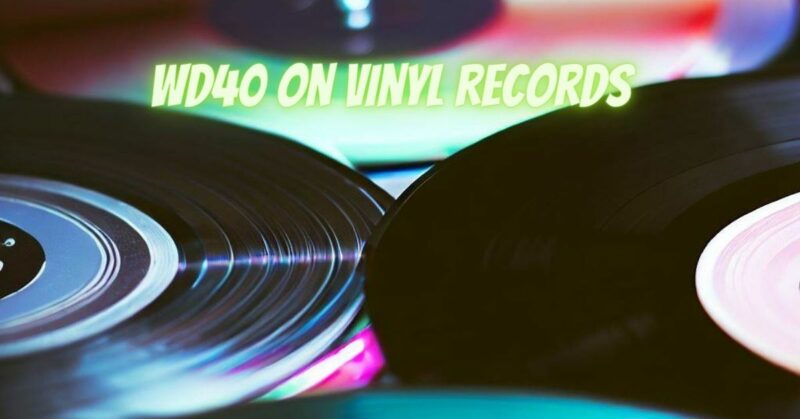Vinyl records hold a special place in the hearts of music enthusiasts. The warm, analog sound they produce is unmatched by digital formats. However, vinyl records are not only beloved for their audio quality but also for the tactile experience they offer. To ensure your vinyl collection stands the test of time, proper maintenance is essential. One unconventional yet effective tool for vinyl record maintenance is WD-40. In this comprehensive guide, we will explore the safe and proper ways to use WD-40 for vinyl record upkeep.
Understanding Vinyl Records
Before delving into vinyl record maintenance with WD-40, it’s essential to understand the composition of these iconic discs. Vinyl records are made from polyvinyl chloride (PVC), a type of plastic that can be vulnerable to dust, dirt, and static electricity. Records have grooves that hold the music’s information, and any debris or contaminants on the surface can lead to audio degradation.
Why WD-40?
WD-40 is a versatile product known for its ability to lubricate, protect against rust and corrosion, and displace moisture. Its unique properties make it a potential candidate for vinyl record maintenance. However, it’s crucial to use WD-40 with caution and follow the guidelines below.
Using WD-40 for Vinyl Record Maintenance
- Gather Your Supplies:
- WD-40 (choose the standard WD-40 variant, not specialized versions)
- Clean, lint-free microfiber cloths
- Soft brush (preferably an anti-static brush)
- Record cleaning solution (optional)
- Distilled water
- A vinyl record cleaning kit (optional but recommended)
- Preparation:
- Start by washing your hands thoroughly to prevent transferring oils and dirt to the records.
- Set up a clean and dust-free workspace. It’s best to work on a flat surface.
- Cleaning Process:
- Gently brush the record’s surface with an anti-static brush to remove loose dust and dirt particles. Always brush in a circular motion from the outer edge of the record towards the center to prevent pushing debris into the grooves.
- If your record has stubborn grime or residue, you can lightly spray WD-40 onto a clean, lint-free cloth (not directly onto the record). Wipe the record gently in a circular motion, following the grooves. Do not apply excessive pressure, and avoid the label area.
- After using WD-40, clean the record again with a separate clean, lint-free cloth to remove any remaining residue. Ensure that the record is completely dry before playing it.
- Regular Maintenance:
- To maintain your vinyl records, it’s best to prevent dirt and dust buildup. Store them in anti-static inner sleeves and outer plastic covers.
- Clean your records regularly with a dry anti-static brush to prevent static buildup.
- Alternative Cleaning Options:
- While WD-40 can be effective, some collectors prefer specialized vinyl record cleaning solutions. These are designed to clean records without leaving any residue and are generally a safer choice.
- Avoid Excessive Use:
- Limit the use of WD-40 to situations where other cleaning methods have failed. Overusing WD-40 can potentially damage your records and affect their sound quality.
Vinyl record maintenance is essential for preserving your cherished collection and ensuring the best possible sound quality. While WD-40 can be a useful tool in your cleaning arsenal, it should be used sparingly and with caution. Always prioritize gentle, non-abrasive cleaning methods, and consider investing in a dedicated vinyl record cleaning kit for the best long-term results. With proper care, your vinyl records will continue to provide you with the warm, nostalgic sound that makes them so beloved among music enthusiasts.


